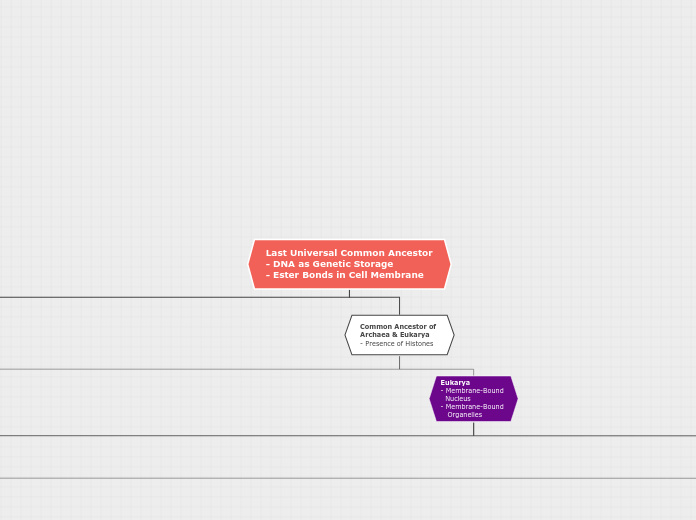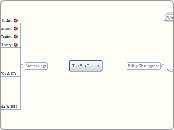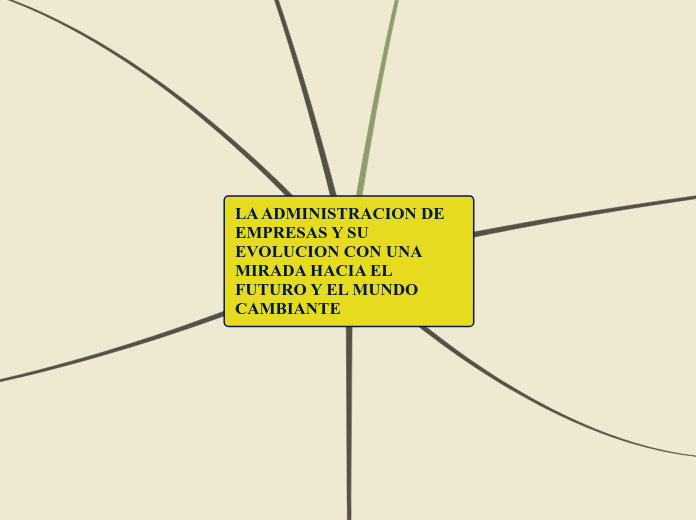evolution
kingdoms
animalia
Cnidaria (jellyfish, anemone, corals)
Chordata (mammals, fish, reptiles, birds)
Porifera (freshwater sponges, sea sponges)
Mollusca (octopuses, squid, cuttlefish)
organisms are multicellular, eukaryotic and without chlorophyll.
cells have membrane-enclosed organelles and a nucleus
multicellular organisms
plantea
mosses, liverworts, ferns, trees, shrubs, herbs, and corn
They are eukaryotic, multicellular and autotrophic organisms
The plant cell contains a rigid cell wall.
fungi wikipedia
mushrooms
molds
yeast
feeding on dead or decaying material
Fungi exhibit the phenomenon of alternation of generation
they are eukaryotic, non-vascular, non-motile and heterotrophic organisms
Protista
large complex grouping of mostly unicellular eukaryotic organisms
amoebae, red algae, dinoflagellates
sexual and asexual reproduction
nuclear membranes around their DNA
Archaeabacteria
oldest living organisms on earth
classified as bacteria
methanogens
thermophiles
the presence of characteristic tRNAs and ribosomal RNAs
rigid cell wall provides shape
cell membranes of the Archaebacteria are composed of lipids
ability to live in extremely hot or chemically aggressive environments
Eubacteria
found as individual cells or in the large colonies
examples
Chlamydia Trachomatis
Escherichia Coli
some have cilia and flagella for movement
shaped like
tight coils, grape-like clusters, filaments and thin biofilms
prokaryotic microscopic cells
unicellular
Internal Systems
Cystic Fibrosis
effect on the The Circulatory system
Higher BP can be the result of oxidative stress
stress on the arterial wall
increased in parallel with myocardial work
impaired blood oxygenation
higher heart rates and diastolic blood pressure
effect on the organs of the Digestive system
on the organs of the respiratory system
EG
causes
Inflammation and infection of the upper airways and sinuses
normal thin secretions in the lungs to become very thick
ideal breeding ground for bacteria and fungi
lung infections , pneumonia Inflammation of the lungs often caused by a bacterial or viral infection. or bronchitis
pneumonia Inflammation of the lungs often
caused by a bacterial or viral infection., or bronchitis
effect your pancreas,
because the thick mucus produced blocks ducts in your pancreas
This stops proteins that break down your food
Malnutrition and vitamin deficiencies
because
nability to absorb nutrients
The Respiratory system
the environment and the respiratory system
factors
parasites
population density
pollutants
food
temperature
why
brings air from the environment in contact with the delicate cells in our lungs
to provide oxygen and to expel carbon dioxide
Cells Lining the Respiratory Tract
Breathing in air pollutants can irritate your airways
Exposure to air pollution
can lead to
asthma
stroke
heart attacks
lung cancer
For example, exposure to traffic pollutants
consist of the
lungs
Helps oxygen breathed air to enter the red cells in the blood
bronchi
trachea
larynx
pharynx
Mouth
nose
aids the body in the exchange of gases
between the
air and blood
between the blood and the body’s cells
The Digestive system
brain
hormones
multiply effect on the body
hormones regulate the enzymes
hormone serotonin
Accessory digestive organs
pancreas
liver
gallbladder
squeezes bile into small intestine
stores bile
thick liquid
Rectum
Elimination
Large Intestine
Absorption
small Intestine
enzyme secreted
Bile duct
proteases
Lipase
digest fats and lipids
pancreatic juice
amylase
pancreatic lipase
Stomach
Digestion
Esophagus
Pharynx
Salivary glands
Ingestion
The Circulatory system
Cardiac Cycle-
Ventricular diastole
Ventricular systole
Atrial systole-
Atrial diastole
atria and ventricles contract
parts
blood
Plasma
carry nutrients, hormones, and proteins
White blood cells
circulate in the blood and respond to damage or illness
important for protecting your body from infection
Red blood cells-
transport oxygen to your body's tissues
they carbon dioxide to your lungs for exhalation
Transports oxygen-rich blood from the heart to the lungs.
arteries
blood vessels that carry blood away from the heart
biodiversity
plants
cell transportation
osmosis
the movement of molecules across a cell membrane .
from lower concentration to a region of higher concentration
against the concentration gradient
water moves in and out a cell
moving from high to low concentration
water molecules
diffusion across a cell membrane
water concentration different from solute concentration
endocytosis
microbiology Endocytosis definition, types and Steps
phagocytosis
phagosome
ingestion of particles larger than 0.5 μm
into a plasma membrane derived vesicle
nutrition in unicellular organisms
cell engulfs
particles into its cytoplasm
other cells
macromolecules
pinocytosis
substances are brought inside a cell
molecules dissolved to liquid
necessary for cell
cellular fluid and dissolved substances
Properties of cell membrane wikipedia
cohesion
Dixon and Jolly in 1894
Water molecules have a strong mutual force of attraction
called cohesive forcedue
cohesion-tension theory
3.then pulled up the plant stem
2.water molecules in xylem under tension
1. water is pulled through a leaf
properties
5. fluid-like structure
4. held together by non-covalent interactions
3. made up of
lipids
2. consists of a phospholipid bilayer.
1. thin enclosures that form closed boundaries.
details
reactions
response to differing concentrations
of solutes on the two sides of the membrane
cell has equal concentration of water
isotonic
same concentration
special diffusion
diffusion transports material
across membranes and within cells
Osmosis is a special case of diffusion.
vascular tissue
comprised of the xylem and the phloem
phloem
causing water to diffuse
Phleom loading
loading carbon into the phloem
for transport to different 'sinks'
sink
other processes
storage
growth
metabolism
found in external root cylinders
stores
proteins
water
carbohydrates
jobs
distribution of organic nutrients
transportation
evidence
Biogeography
patterns of biological diversity
their underlying enviorment
historical causses
splitting of pangea
forming the modern continents
the Atlantic
Indian oceans
different fossils
similar species on different continents
similar anatomy
different species
different contentes
location of fossils
fosil record
preserved remains
types of fossils
Preserved remains
Trace fossils
Casts fossils
Pseudofossils
Amber
traces of an organism
distribution of species
compares locations
current location
past locations
past geography
DNA
Anatomy
similar ancestry
Comparative anatomy
adaptive changes
differences in anatomy
similarities in anatomy
Analogous Structures
common ancestral feature
different anatomy
similar function
Homologous Structures
similar physical features and common ancestor
different function
pentadactyl limbs
similar structure
similar developmental patterns
tendons
number of bones
ligaments
Embryology
prenatal development of gametes
Fertilization of the female gamete
blastocyst implanation
fetal devleopment
emmbryo development
blastocyst development
egg and the male gamete spermatozoa
womb stages of organism’s development
sperm meets an egg
fertilized egg
formation of zygote
endosymbiotic theory
How eukaryotic cells evolved from a prokaryotic cell engulfing another prokaryotic cell
mitochondria are descended from specialized bacteria
Mitochondria and chloroplasts
have their own DNA which is circular, not linear
same size as prokaryotic cells and divide by binary fission.
some of the organelles in eukaryotic cells were once prokaryotic microbes
Vaccines and viruses
types of vaccines
Conjugate vaccines
vaccines fight a type of bacteria that has antigens.
Non-live vaccines
also fight viruses and bacteria
Subunit vaccines
contain only the essential antigens
Toxoid vaccines
prevent diseases caused by bacteria
virus structure
Grade 11 Biology study guide
composed of
Capsid: a protein coat that gives a virus its shape. It makes up 95% of the virus.
Nucleic acid: DNA or RNA
B memory cells
Memory B cells circulate in the blood stream
remembers antigen exposed
remembers antibody that worked on it
B-cells
type of white blood cell of the lymphocyte subtype
function in the humoral immunity
produce antibodies
Hyper T cell
remembers antigen
Cytotoxic T -cell
host defense against viral infection
through antigens
vaccines trigger
Macrophages
white blood cells that swallow up and digest germs
exposes immune system to virus
allows body to fight it off
cell mediated response
humoral response
Genetics
factors affecting Variation
meiosis
cell division in sexually reproducing organisms
reduces the number of chromosomes in gametes
steps
telophase II
anaphase II
metaphase II
prophase II
telophase I
anaphase I
prophase I
Crossing over occurs between
metaphase I
two identical halves of a chromosome
two “sister” chromatids
joined at the
helps divide a cells DNA during division
centromere
spindle fibers
divides the genetic material in a cell
equally divides the chromosomes
from a parental cell
into two daughter cells
paired chromatids
helps in mitosis
constricted region of a chromosome
Atypical Meiosis
mutations
change in alleles
could lead to new species
gene pool
types
translocation
transfer of molecule to another
point
DNA transfered from molecule
inversion
a segment bas replaced
Deletion
segments of DNA removed
Mistakes made when copying DNA
change in DNA in future
occurs during cell division
happens on a cellular level
non-disjunction
causes abnormal number chromosomes
chromosomal errors
Classed of Ploidy
Classes of Aneuploidy
polyploidy
tetraploid
triploid
polysomy
more than the normal number of specific chromosome
tetrasomy
trisomy
monosomy
only one copy of a chromosome
eg. turners syndrome
nullisomy
both homologues are missing
Single-gene disorders
mutation affects one gene
Sickle cell anemia
types of genetic disorders
Turner syndrome
Kleinfelters
Down syndrome
segregate at anaphase
both chromosomes pass to the same daughter cell
pair of homologous chromosomes failed to separate
Alleles
control the characteristics
Humans have 22 pairs
one pair of sex chromosomes
XX or XY
Phenotype
individual's observable traits
determined by
environmental factors
genomic makeup (genotype)
DIPLOID organisms
diploid cells include blood cells, skin cells and muscle cells
organism with 1 set of homologous chromosome
set of genes
Recessive gene
Dominant genes
overriding the effect of a different variant
of the same gene on the other copy of the chromosome
Crosses
monohybrid cross
the hybrid of two individuals
homozygous genotypes
The presence of two identical alleles at a particular gene
which result in the opposite phenotype for a certain genetic trait.
dihybrid cross
hybrid organism is one that is heterozygous
two different alleles of a particular gene or gene
carries two different alleles
two organisms that are identically hybrid for two traits
Mendel's 2 laws
2. independent assortment of alleles of different genes
from each other during the formation of gamete
The Law of Independent Assortment
1.two copies of alleles of a particular gene
into the gametes.
The Law of Segregation
each inherited trait is defined by a gene pair
Mechanisms of evolution
non-random mating
assorative mating
selective mating
affected by phenotypes
individuals similar to themselves
particular physical characteristics
desirable traits in mates
traits
females pick their mate
based off mating ritual
behavioural
does not change allele frequencies
inbreeding
lead to harmful recessive alleles
gene flow
new traits in a population
slows rate of speciation
speciation
how a new kind of plant or animal species is created
types of speciation
sympatric
occurs in same enviorment
reproductive barrier
isolation mechanisms
preventing reproduction
Pre Zygotic
isolation types
gametic
mechanical
behavioral
habitat
temporal
no mating
Post Zygotic
hybrid break down
hybrid starilility
hybrid inviability
mating occurs
offspring doesn't survive
allopatric
happens in different agrees
different enviornment
different habitat
geological barrier
occurs when barrier formed
succsessive genetic traits over generatin
preventing original reproduction of species
leading to natural selection
characteristics
behavoural
chromosonal
physical
gene transfer from one population to another
migration
allelic change due to movement
different allele frequencies
reproduce in their new populations
Types
dragonflyisuesinevolution
females look at
competition between males
through visual display
through combat
the evolution of certain conspicuous physical traits
of one biological sex choose mates of the other sex to mate
c-12 learning
wide range of
some produce
more offspring
genotype
phenotype
Artificial selection
humans of desirable traits in plants and animals
genetic drift
factors causing genetic drift
best adapt to change
impacts bigger populations
opposite natural selection
# offspring in a generation
founder effect
reduction in genetic variation
small subset of a large population
change in genes
allele frequency
separated from a larger population
new isolated population
new geographic location
the low genetic variation
bottle neck effect
change gene distribution
caused by
habitat destruction
hunting of a species
environmental disaster
reduction in population
fluctuation in alleles from generation to generation
History of evolutionary theory
current theory
charles darwin
Theory of natural selection – Darwin
more offspring is made
fittest offspring survive
variation in a population
mutations lead to variations
distributed meiosis/sexual reproduction
different traits in population
proposed mechanism
natural selection
adaptation
random variations
evolution takes natural selection
types of evolution
macroevolution
encompasses the grandest trends
transformations in evolution
creation of a new species
example
birds from dinosoaurs
longer scaled/time line
microevolution
short periods of time
evolution takes place over generations
changes in the frequency
of a gene in a population
Theories
pre darwin
Wallace's Evidence
phenomenon called natural selection
eg. the golden birdwing butterfly
evolving
Animals evolve
by adapting to their environment
selective pressure
certain phenotypes have survival benefit or disadvantage
competition for resources
competition for food
sexual selection
they changed
fittest individuals survived and reproduced
Linnean Classification System
major groupings
class
genus
species
family
phylum
order
kingdom
aristotle in his classification of animals
fishes
worms
reptiles
birds
incests
animals
attempted natural classification
taxonomy = classification
groups of organisms
based on characteristics
hierarchy of groupings









